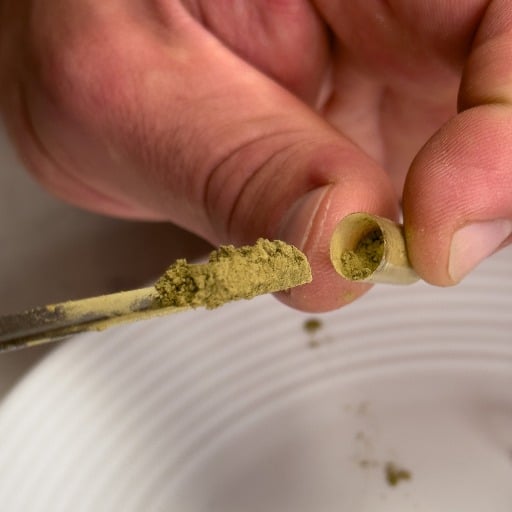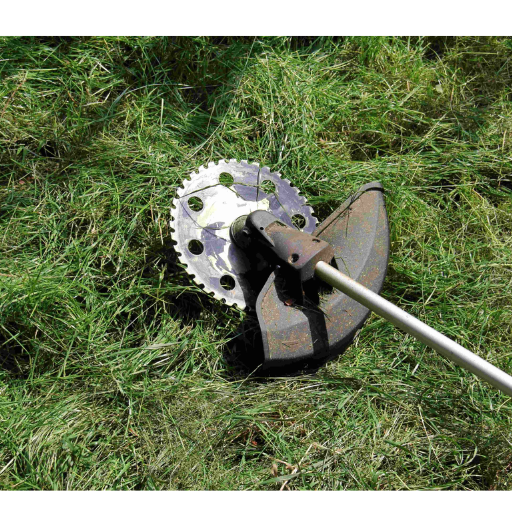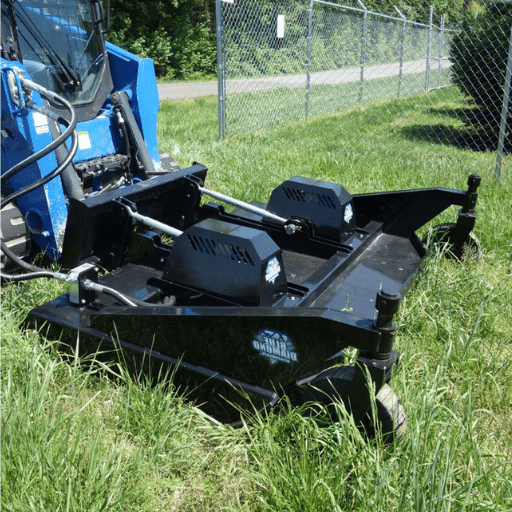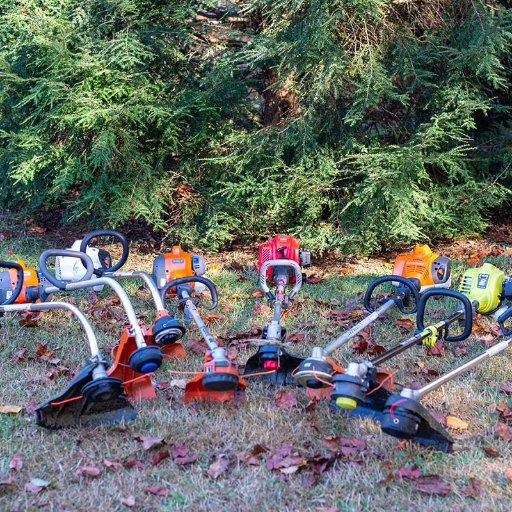In this article, we are going to give you all the necessary information so that you can fill your own capsules. You might be a health professional or possibly supplement a cost-effective option. No matter who you are, we’ve got you covered. All types of fillers have their pros and cons. Throughout this article, we will explain the advantages and disadvantages of different types of capsule fillers, as well as the proper conditions for storing them and when they are most effective. By the time you reach the conclusion of this article, it is my promise that you will have gained ample knowledge on how to fill capsules. You will no longer be dependent on others to fill the capsules for you. So, let’s jump right into it and learn about the inspiring world of capsule filling.
What Are the Different Types of Capsules?

In the case of capsules, there are two main categories: gelatin capsules and vegetarian capsules. Gelatin capsules are the most common and are a byproduct of capsules; gelatin is derived from meat. Gelatin capsules have amazing sealing qualities and some people have reported that they are easier to swallow than others. Gelatin capsules, however, are widely accepted in the pharmaceutical and supplement industry. However, vegetarian capsules have become increasingly popular as they are generally made from plant-based materials. There is still a debate on whether gelatin capsules and vegetarian capsules serve the same purpose.
Understanding Gelatin Capsules and Their Uses
Gelatin capsules are a common part of a variety of industries such as, pharmaceutical, supplements, and cosmetics. These capsules have a soft shell made of gelatin, which is a protein extracted. The use of gelatin capsules has been favored because of the high bioavailability of the material encapsulated inside the capsule and has a quicker absorption time in the body. They come in a range of sizes for different dosage needs.
What makes these gelatin capsules different from the other types, for example, vegetarian capsules? Here are a few things to keep in mind :
Constituents – Gelatin capsules are made up of animal sourced gelatin which acts as a strong and safe enclosure for the powdered forms. This gives a wide possibilities of many ingredients being incorporated making it more stable and bio beneficial.
Digestion – Gelatin based capsules are tender on the inner stomach as they form an easily digestible coating facilitating the unraveling and uptake of the content inside. That is why they are the best option if someone has a weak stomach or needs to use fast-relief medicines.
Widespread Use – Gelatin capsules are use throughout the pharmaceutical industry, nutraceuticals and a wide range of other sectors. This is because they can contain all forms of powdered material from standard medications to dietary pills and herbal powders.
I would like to indicate that sometimes gelatin capsules may not be an option for a person who is on a restrictive diet or a vegetarian or vegan diet. In such situations, one may opt for vegetarian or vegan capsules which are made from cellulose or starch.
Do keep in mind that while selecting the right capsules for yourself, factors such as dietary preferences, choking substances, and even the specifications of your formulation must be evaluated. Capsule, as a product, comes in various forms, and knowing their differences helps you plan your strategy to suit your needs and goals.
Exploring Capsule Size and Its Importance
The capsule size impacts the nutraceutical and pharmaceutical industries as it describes the volume that a capsule can accommodate. The size of a capsule can be determined by a number ranging from 00, 0, 1, 2, 3, 4, and 5. It is important to note that 00 is the largest size while 5 is the smallest size. Therefore choosing the right capsule size is vital for these reasons.
Measuring Dosage: It is important to select the appropriate capsule size so that when the fill material is measured, it can be accurate. For pharmaceutical formulations, it is of utmost importance to ensure that the amount is accurately dosed in order to minimize the risks of over or under dosing when aiming for therapeutic effectiveness.
Arguably, the most important determinant of a patient’s adherence to medication where capsules are taken orally is the size of the capsules. For instance, larger capsules may pose a problem to the pediatric population or patients with swallowing problems. Hence in this setting, Having a larger capsule size may be more beneficial allowing patients to more easily follow their medication regimens.
The volume size is a key influencer in the capsule filling and its structural composition, which is the combination of excipients. Several combinations or different active ingredients would have to be accommodated in a single dose; hence, a bigger capsule size would be needed.
Other issues that need to be taken into consideration when selecting the correct capsule size are the purpose for which the product is going to be used, the required strength or dose form, the patients that will be taking or using the product, and the formulation’s requirements. The same applies to expert opinions and reputable sites, and one considers and trusts, as these can help constitute the appropriate decision-making one needs to come up with in order to settle for the preferable type of capsule size for his or her situation.
How to Choose the Right Capsule Filler
The process of selecting an appropriate capsule-filling machine can be complex but detrimental to integration for the optimal working of capsule production. In order to assist you in choosing the best, factors such as:
- Production Output: First try to establish the production output necessary to cater to your needs, whilst doing that keep in mind other variables such as how many capsules you would like filled in a batch and how many capsules in an hour.
- Technical Parameters: Look into filling capacity, capsule diameter, filling volume, and capsule availability for various machine fillers to see if they can meet your production needs. The focus, in this case, should be on the requirements of capsule fillers in terms of speed and accuracy.
- Caution and Dependability: Focus on capsule fillers manufactured by well-known brands that provide quality equipment. Check for trademarks, customer complaints, and reviews to gather relevant information.
- Operating and Maintenance Issues: This would help gauge the amount of skill and effort required by the operator to work the capsule filler along with its maintenance. Problems like these could be solved easily if there’s a structured and well-built interface.
- All Weather and Standards: Quality capsule fillers should always have operating standards that are acceptable for the global market and should meet the specifications demanded by customers. Dust-free features, easy to clean parts, tamper proof mechanisms and adherence to industry accepted good manufacturing practices (GMP) are what you should look for.
In research, after taking into consideration all these aspects, you can conclude and select the right capsule filling machine that suits your expectations and those of your organization in terms of production output and filling accuracy with minimal errors.
How to Fill Capsules Manually?

If you’re exploring the option how to fill capsules manually, there are a few key steps you can follow to ensure a successful process:
- Step-by-Step Capsule Filling Process: Understand the step-by-step process involved in filling capsules manually, including preparing the filling material, separating the capsules, and carefully filling each capsule.
- Essential Tools for Capsules By Hand: Equip yourself with the necessary tools for manual capsule filling, such as a capsule filler device, spatula or spoon, and a clean, well-lit workspace.
- Tips to Avoid Excess Powder Spillage: Minimize powder spillage by maintaining a steady hand, using the proper technique to fill the capsules evenly, and periodically checking and adjusting the quantity of the filling material.
By following these guidelines, you can confidently fill capsules manually while ensuring accuracy, efficiency, and quality in your capsule-filling operations.
Step-by-Step Capsule Filling Process
I am familiar with the great role a capsule filling process plays due to my experience as a capsule filler. Let us look at the steps together:
A well-lighted clean surrounding must be provided to facilitate work. Other necessary components like capsule filling device, spatula or spoon and filling substance required for capsule forming must be made available hence acquiring a designated workspace.
- Firstly we want to fulfill our dosage aim therefore remember what capsule fills more than 2 standard units since 000 is equal to 3 000 most definitely fills at least four.
- In the ensured condition to fill and smoothen the capsule, empty halves of the capsule would be separated carefully but not breaking or deforming them therefore that’s more than an option but imperative step to add in.
- Now this demands fueling. Using capsule filler or lab scoop put the quantity of filling substance inside the first half ensuring putting sufficient amount but not going overboard. It can be anticipated this step does use muscle memory enabling evenness to be controlled but also a slow pace therefore handing the material at a correct rate.
- Remember: there must not be capsules that have spillage or leakage, and you can repeat these steps backwards if this is to occur, to fix that ensure the two halves are joint properly and with ease by stressing the belts of the capsules together and voola a full capsule is made.
- Clearing and Putting Away: Once the filling operation is done, clear any excess material that might have dripped and pack the filled capsules in a suitable box that can be stored safely, avoiding contact with moisture and direct light.
Every part of the procedure of capsule filling is quite unique and requires diligence. With these instructions and knowledge of kinks in the capsule-filling process, you are sure to carry out your capsule-filling operations in an accurate, effective, and qualitative manner.
Essential Tools for Capsules By Hand
When filling capsules by hand, it’s important to have the right tools to ensure accuracy and efficiency. Here are a few essential tools that can aid in the capsule-filling process:
- Capsule Filling Tray: A capsule filling tray helps to hold and organize the empty capsules, making it easier to fill them with the desired material.
- Tamper or Packing Tool: A tamper or packing tool is used to compact the powder or material inside the capsules, ensuring consistent and proper filling.
- Spatula or Scoop: A spatula or scoop can be used to transfer the material into the capsules, ensuring precise measurements and minimizing spillage.
With these essential tools at hand, you can effectively fill capsules manually, maintaining accuracy and quality throughout the process.
Please note that the answer is generated based on general knowledge about capsule-filling tools and techniques. For more specific and accurate information, consult professional guidance.
Tips to Avoid Excess Powder Spillage
Sure, here are some tips to minimize excess powder spillage when filling capsules manually:
- Maintain a Clean and Organized Workspace: Start by ensuring your work area is clean and free of any spills or debris. A clutter-free workspace helps minimize the chances of powder contamination and accidental spills.
- Use Proper Technique: When filling capsules, it’s important to use a steady and controlled hand to avoid overfilling or uneven distribution of the powder. Gently tap the capsule machine to level the powder, ensuring consistent and accurate measurements.
- Consider Using a Funnel or Dispensing Tool: Using a funnel or a specialized dispensing tool can help direct the powder into the capsules more precisely, reducing the likelihood of spillage. Ensure that the funnel or dispensing tool is clean and properly sized for the capsules you are using.
It’s important to note that the tips provided here are general guidelines. For more specific information and technical parameters related to capsule filling machines,consult professional guidance, and review the corresponding technical manuals or documentation provided by the manufacturers.
What Is a Capsule Filling Machine and How Does It Work?

A capsule-filling machine is a specialized device designed to automate the process of filling empty capsules with powdered or granulated substances. It consists of several components that work together to ensure precise and efficient filling. Here’s a brief overview of how it works:
- Hopper: The machine is equipped with a hopper that holds the powdered or granulated fill material.
- Capsule Supply System: Empty capsules are fed into the machine using a capsule supply system.
- Separation and Orientation: The machine separates and orients the capsules in the correct position for filling.
- Filling Mechanism: The fill material is dispensed into the capsules using a filling mechanism, such as a dosing disc or tamping pins.
- Compression: Once filled, the capsules are compressed to ensure proper closure.
- Ejection: The filled capsules are then ejected from the machine for further processing or packaging.
It’s important to note that the operation of capsule-filling machines may vary depending on the specific model and manufacturer. For more detailed information and instructions, it is recommended to refer to the technical manuals or documentation provided by the machine manufacturers.
Components of a Capsule Machine
In my previous role as a capsule filling machine engineer, I worked with a number of manufacturers that relied on an end to end process and fully automated. As a starting point, lets break down the answers you are looking for – by first of all explaining the components of a capsule filling machine.
- Hopper: The hopper is the device that contains the empty capsules that require filling. It stores a large quantity of capsules to ensure the regular flow of output during the course of production.
- Capsule Orientation System: This system allows for the proper alignment of the capsule ends i.e. body and cap before filling takes place, so as to ensure the capsules are correctly aligned for the filling process.
- Powder Filling Station: A filling station that provides the fill material (drug substances or supplements depending on what is being filled into the capsules) into the appropriate capsules. Fill material amounts must be dispensed proportionally so that the dose amount and concentration the filled capsules contain are uniform.
- Tamper Pins or Tamping Pins: They are used to remove air spaces/recesses that are likely to exist in the filled capsules, thus achieving a uniform distribution of the fill materials to avoid insufficient filling or over filling.
- Compression Mechanism: The filled capsules are compressed together so that there are no leaks/exposures in the sealing which would in turn lead to contamination of the contents.
Ejection System: Once the capsules are filled, they are subsequently let go from the machine. What further processes or packaging take place afterwards is not known.
It should be understood that the operation and the functions of capsule filling machines are dependent upon the model and the manufacturer of the equipment. More comprehensive information and guidelines can be obtained from the technical documentation supplied by the manufacturer of the machines.
Now, let’s move to the other questions you ask about automatic capsule fillers, capsule filling machines manual, how to size the capsule and which filling material is suitable, how to use pill capsule calculator, how to make this accurate using in lab scoop and the best way to store capsules.
Understanding Automatic Capsule Fillers
The need for automatic capsule-fill machines arose from the demand to make the capsule-filling process simpler and smoother. The different phases of the process, for example, capsule sorting out, dosing powder, closing the capsule, and ejection, have been mechanized. Such machines are quite effective and can fill up hundreds or even thousands of capsules in a minute, depending on the model and specifications of the machines. Automatic capsule fillers themselves may differ in operation and construction details from one manufacturer’s products to another’s. For further understanding and guidance, it is better to look for the operating manuals or other documents provided by the manufacturer of the machine. You will have information, views, and recommendations about the operation, intriguing tasks, and proper equipment used for automatic capsule fillers.
How Much Powder Do You Need to Fill Your Capsules?

Determining the precise amount of powder needed to fill your capsules depends on several factors, including the desired dosage, the size of the capsules, and the density of the powder. To help you navigate this process effectively, here are some key considerations:
Determining Capsule Size and Fill Material
- Choose the appropriate capsule size based on the dosage requirements and the compatibility with your target audience.
- Consider the fill material, as different powders may have varying densities, affecting the amount required to fill each capsule.
Calculating Pill Capsules Dosage
- Consult the recommended dosage guidelines provided by healthcare professionals or regulatory authorities.
- Calculate the total amount of powder needed by multiplying the dosage per capsule by the number of capsules required.
Using a Lab Scoop for Accurate Measurements
- A lab scoop or a precise measuring device can help ensure accurate measurement of the powder.
- Carefully level off the scoop to ensure consistent and precise dosing.
By considering these factors and following professional guidance, you can determine the appropriate amount of powder needed to fill your capsules accurately and consistently. For more detailed instructions and specific information regarding your automatic capsule filler, refer to the technical manuals or documentation provided by the machine manufacturer.
Determining Capsule Size and Fill Material
I think very important step during the encapsulation process is filling the capsule with a selective size. The specific dose needs, characteristics of the ingredient or supplement, and the purpose of the capsule must be well understood to assist in making the selection. Good sources of information and research can be beneficial. It is necessary to remember the following:
- Selection of the appropriate capsule size: The dose and dosage form have an effect on the capsule size. If the potency and use of the capsule are provided, there can be a requirement for a dose on a single serving which together will have an impact on the size.
- Fill Material Considerations: Fill material is the active ingredient of the capsule, and the correct filling must be done to ensure that the encapsulated ingredients are delivered and remain impotent. The common fill material encompasses gelatin for standard capsules and vegetable gelatin for vegetarians and vegans. Considerations in making a selection of a fill material consist of the type of active ingredient for the capsule, dietary requirements, and other needs of the market target group or consumers.
- Seek help from professionals: To aid in the selection of the capsule size and the filling material, it is better to contact professionals from the industry like formulation specialists or capsule producers. They have adequate knowledge and experience in the area and can provide appropriate advice based on the specified needs or industry standards/ practices.
Do remember, the selection of the capsule size and the encapsulation material is an essential part of the entire encapsulation process, and hence, adequate attention should be paid to them so that the end product’s performance and customers’ satisfaction can be enhanced. Doing research and consulting experts gives you the necessary information to make decisions that fit your unique situations and objectives.
Calculating Pill Capsules Dosage
Considerations in Setting Dosage Guidelines: Dosage limit is applied as a frequency of dosage attributed to heirage or alteration in dosage. If changes in quantity are made, proportions of substance required would change so baseline quantities are also taken into consideration.
Focus on General Guidelines: Start at patients’ goals, and find products guidelines in its use. End with methods and intended applications of the dosage calculations. Finding precise amounts of active ingredients is crucial to uphold safety guidelines and make sure that your product is fully functional and efficient. Hence the recommendations below are suggested in order to develop an effective strategy in how to calculate dosing.
Recall that for amounts of pill capsules, precise dosage calculation is necessary, along with understanding the active substance’s function. To make accurate dosage calculations and to ensure the safety and efficacy of the product, it is of utmost importance to follow the guidelines, consult the literature and seek experts’ advice.
Using a Lab Scoop for Accurate Measurements
Capitalizing on a lab scoop seems to make sense while weighing powders for dosage units intended for hand filling. I came to understand that these places underscored the need for precision in order to maintain the accuracy and the constancy of the given dosage. A few things should be noted while using a lab scoop in practice:
- Materials and Size of Lab Scoop: Always use a lab scoop that will not react with the chemical composition of the powder being used and this will ensure no contamination takes place. The performance of the scoop in mass estimation relies on the size of the scoop, the required size of the scoop should match the quantity of powder being measured to reduce inaccuracies and wastage.
- Tare Weight: Whenever one is about to measure a new substance, one should always consider paraffining the lab scoop with an analytical balance. Washing these cups can also suffice but it is crucial to measure the pure cup’s weight and then the mass of filled scoops, then take the difference to get the measurement of the substance itself.
- Personal Technique: When measuring with a lab scoop, it should be filled to the same level every time; one should not have to use a spatula to relieve the powder, and at no point in time should the powder have to be forced, it compromises the constant amount of force applied during the mass measurement procedure.
Depending on the powder that is measured, certain technical parameters might change. However, it would be good to refer to the official guidelines, scientific literature or formulation specialists for such requerimientos. Sticking to these recommendations and using a lab scoop for that matter you can accurately measure dosages and improve the quality and effectiveness of your products.
What Are the Best Practices for Capsule Storage?

Ensuring the integrity and potency of capsules is crucial for maintaining the quality and efficacy of your products. Here are some key best practices to follow:
- Ensuring the Integrity of Empty Capsules:
- Store empty capsules in a cool, dry, and well-ventilated area to prevent moisture absorption and potential degradation.
- Keep them away from direct sunlight, extreme temperatures, and humidity, as these factors can compromise the capsules’ quality.
- Utilize airtight and moisture-resistant containers or packaging to protect the capsules from external elements.
- Storing Filled Capsules to Maintain Potency:
- Store filled capsules in a controlled environment with stable temperature and humidity levels, following the recommended storage conditions specific to the encapsulated ingredients.
- Consider using desiccant packs or moisture-absorbing agents to further protect against moisture accumulation.
- Keep the capsules away from strong odors, heat, light, and air exposure to avoid potential ingredient degradation.
- Preventing Capsule Degradation Over Time:
- Implement a robust inventory management system to ensure proper rotation and use of older capsules before their expiration dates.
- Regularly inspect stored capsules for any signs of discoloration, changes in texture, or unusual odors, and discard any capsules that show signs of degradation.
- Follow product-specific guidelines and consult formulation experts, scientific literature, or official guidelines to address any specific storage considerations for your particular capsule formulations.
By adhering to these best practices for capsule storage, you can safeguard the integrity, potency, and overall quality of your products, ensuring that they consistently meet the high standards expected by your customers.
Ensuring the Integrity of Empty Capsules
As an expert in the field, I understand the importance of maintaining the integrity of empty capsules to ensure the quality and efficacy of your products. To help you navigate this process:
- What are the key factors to consider when storing empty capsules?
- Temperature and Humidity: Store empty capsules in a controlled environment with temperatures between 15-25°C (59-77°F) and humidity levels between 40-50%.
- Protection from Contaminants: Prevent exposure to strong odors, light, heat, and air to avoid potential degradation of the capsule materials.
- Proper Handling and Packaging: Ensure capsules are stored in well-sealed containers or packaging to protect them from moisture and contaminants.
- How can I extend the shelf life of empty capsules?
- Proper Storage Conditions: Maintaining consistent temperature and humidity levels, as mentioned above, is crucial to extend the shelf life of empty capsules.
- Quality Assurance: Regularly inspect empty capsules for any signs of discoloration, changes in texture, or unusual odors. Discard any capsules that show signs of degradation.
- Efficient Inventory Management: Implement a robust inventory management system to ensure rotation and use of older capsules before their expiration dates.
- Are there any specific considerations for storing empty capsules based on their composition or size?
- Formulation Guidelines: Follow product-specific guidelines and consult formulation experts, scientific literature, or official guidelines to address any specific storage considerations for your particular capsule formulations.
- Manufacturer Recommendations: Refer to the manufacturer’s recommendations for storage conditions, as they might provide specific guidance based on the composition or size of the capsules.
By adhering to these practices, you can safeguard the integrity and quality of your empty capsules, ensuring they remain potent and ready for use in your formulations. Remember, proper storage is essential to maintain the overall quality and performance of your products.
Storing Filled Capsules to Maintain Potency
It is obvious to us that careful control and storing filled capsules requires attention and best practice approaches adherence. Capsule storage can be summarised by a few good practices:
- Temperature and humidity control: Capsule formulations have recommended temperatures and relative humidity ranges for storage. Maintaining these ensures that the encapsulated material does not either lose moisture or absorb moisture, both of which could impact the filled capsules’ integrity and efficacy.
- Protection from light exposure: It is advisable that filled capsules are placed in opaque bottles or are stored away from direct light. There are some components in a capsulated form that are photo-sensitive and can be affected by light degradation over time hence they lose their strength.
- Avoid extremes: These low and high temperatures interfere or completely destroy the filled capsules- both its integrity and potency. Do not store the capsules in tonsilitories, near windows, air conditioners or any hot or cold spots as that will cause extreme fluctuation in temperature.
- Proper Marking and Inventory Management: The shade under which the capsules should be stored, description of the product, batch number, and expiry dates should be marked on the containers relative to the shade of the enclosure. The management system for the inventory should make certain that its design provides for sufficient capsule use before the stated expiry date, which is stricter than an accurate rotation system does.
Thus, in order to preserve both the potency and quality of the filled capsules, and therefore their effectiveness when included in formulations, it is imperative that you adhere to the aforementioned guidelines. As a matter of practice, please reach out to formulation specialists, read scientific publications, or refer to any guidelines relevant to your specific compositions of the capsules for additional information on storage concerns.
Preventing Capsule Degradation Over Time
To ensure that filled capsules are intact and their potency is undisputedly active, resistant measures against the degradation of caused capsules should be taken into account, Which are as follows:
- Staying within the limits of suitable temperatures specifically between 20-25oC (68-77oF) ensures that capsules do not experience excessive light, moisture and heat. Moreover, the relative humidity of the air surrounding the capsules should also stay below 60 percent and corners should be avoided in the extremes to maintain distance from unexpected temperature changes.
- Moisture and oxygen can intrude if proper care isn’t taken, To avoid such exposure use airtight containers or switches to blister packs or desiccated bottles.
- Suitable containers go a long way in safeguarding capsules from moisture as well as light since light sensitive compounds can degrade when light is exposed making capsules less effective. As a result altering the degradation process is important which can be achieved by changing the packaging style or the containers into opaque cover.
- When labeling storage containers accurate information should be enclosed regarding the location, Batch number and expiration dates, This will greatly improve the organizational system in terms of combustion. This in turn will help to enhance capsule rotation since older batches will need to be used before the expiry.
- Control of Inventory: Continuous observation and management of the stock on hand shall be done to avoid instances where capsules Overshoot their expiration date. Implement a FIFO policy to reinforce the use of older products before their newer substitutes are used.
- Control of Quality Assurance: Routine reassessments of the quality control of the filled capsules potency and stability should be done. Tests for dissolution, disintegration and assays may be done to checkwhether the capsules are within specification or not.
Keep in mind that the precise technica parameters and considerations may differ with reference to the composition and formulation of the capsule. It would be prudent to seek advice from the formulation specialists, scientific papers or standard instructions directly related to the materials, particularly the capsules, focusing on the requirements for storage.
References
Tablet (pharmacy)
Capsule (pharmacy)
Powder
Frequently Asked Questions (FAQ)
Q: What is the best way to fill capsules at home?
A: The best way to fill capsules at home is by using a manual capsule filling machine. This allows you to separate the empty capsules, fill the body, and use the tamper to compress the powder before sealing with the top half of the capsule.
Q: How do I choose the right size capsule for my needs?
A: Choosing the right size capsule depends on the volume of the powder you want to pack. Common sizes include size 00, which is often used for larger doses. It’s important to consider the density of the powder and how much you wish to include per capsule.
Q: What equipment do I need for making your own capsules?
A: To make your own capsules, you will need a manual capsule filler, a capsule holder, and a tamper. For larger batches, a semi-automatic capsule-filling machine might be more efficient. A capsule counter can help ensure accuracy in counting.
Q: Can I use a capsule-filling machine for multiple capsules at once?
A: Yes, a capsule-filling machine enables you to fill multiple capsules simultaneously. This is particularly useful for larger batches and ensures consistency across all capsules.
Q: How do I use the tamper to pack the powder effectively?
A: After pouring the powder into the capsule bottom, use the tamper to compress the powder gently. This helps to pack the powder evenly and allows you to fit more into each capsule, ensuring a consistent dose.
Q: What is the purpose of a capsule polishing machine?
A: A capsule polishing machine is used to clean and polish filled capsules, removing any excess powder and enhancing their appearance. This process ensures high-quality capsules with a professional finish.
Q: How do I separate the empty capsules before filling?
A: Empty capsules come in two parts: the capsule bottom and the top half. To separate them, gently pull apart the two halves, placing the bottom in the capsule holder for filling.
Q: Is hand filling recommended for making capsules?
A: Hand filling is an option for small batches or when precision is not critical. However, using a manual capsule filling machine is typically more efficient and ensures a more uniform fill.









